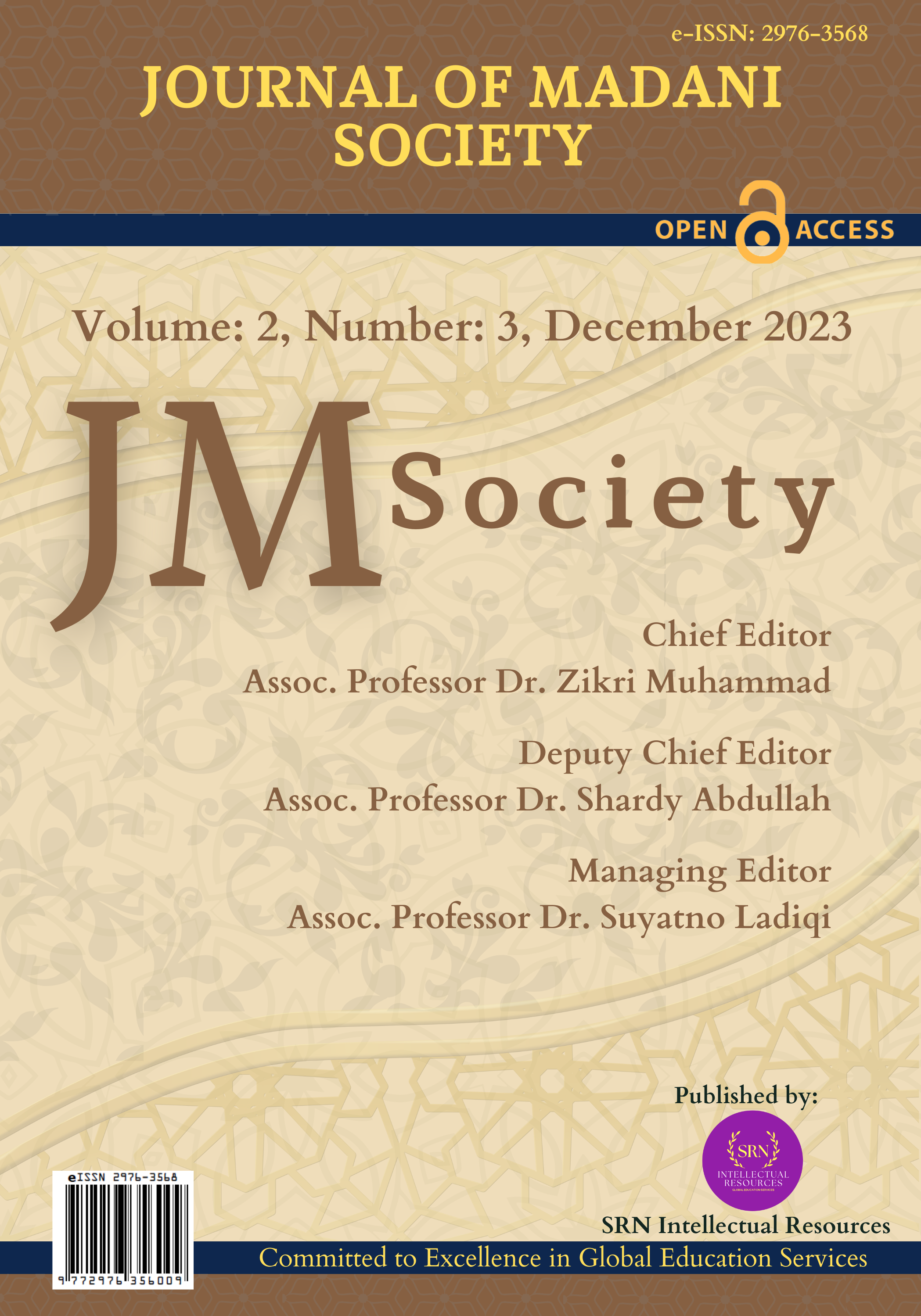Diversity Communication of Interreligious Harmonization: A Case Study of Rama Agung Village, Bengkulu Utara Regency, Indonesia
https://doi.org/10.56225/jmsc.v2i3.227
Keywords:
Diversity, Communication Patterns, Interreligious, HarmonizationAbstract
Indonesia is known as a country that has many tribes, cultures, races, religions, and codes of conduct of the people. But the exciting thing is that the complexity of diversity does not divide Indonesia. Rama Agung Village, Bengkulu Utara Regency, was designated as a Religious Harmony Village in Bengkulu Province in 2018 by the Minister of Religious Affairs of the Republic of Indonesia. Upon launching the minister of religion, the Governor of Bengkulu designated it as a Miniature Village of Religious Harmony in Bengkulu Province. This is in line with the decision of the Regent of Bengkulu Utara in 2021, which established Rama Agung Village as a Religious Tourism Village. In this position, religious and cultural tolerance becomes important as the main indicator that can reduce points of conflict between individuals, social classes, and society. This tolerance was formed not on the basis of an accident. Still, the similarity of struggle that gave birth to valuable lessons bound in the points and points of Pancasila elaborated in the State Constitution and actualized in everyday life. This research design uses qualitative methods with a single instrumental case study approach. Data collection will be collected through interviews and document review. The results showed that the harmonization that occurs in Rama Agung village is currently maintained because of the value of harmony instilled by the community in interreligious life, namely open communication between fellow believers, mutual respect for other religious celebrations, and the rules of other religions.
Downloads
References
Hazani, D. C. (2019). pola komunikasi antar budaya dalam membangun harmonisasi masyarakat heterogen di Kota Mataram. PENSA, 1(2), 368–390.
Hołda, M. (2023). Interreligious Solidarity as a Benefit of Divine Hiddenness—On the Meaning of the Ambiguity of Religious Phenomena. Religions, 14(7), 8–66. https://doi.org/10.3390/rel14070866
Khatibah, K., Irwansyah, I., & Ritonga, H. J. (2021). Pola Komunikasi Masyarakat Dalam Menumbuhkan Kerukunan Di Barus (Studi Terhadap Penganut Islam, Kristen, Dan Parmalim). Metacommunication; Journal of Communication Studies, 6(1), 86–98.
Khoiruzzadi, M., & Dwi Tresnani, L. (2022). Harmonisasi Masyarakat Muslim Dan Kristen: Pola Interaksi Bermasyarakat Dukuh Purbo. Harmoni, 21(1), 130–150. https://doi.org/10.32488/harmoni.v21i1.599
Mahamid, M. N. L. (2023). Moderasi Beragama: Pandangan Lukman Hakim Saifuddin terhadap Kehidupan Beragama di Indonesia. Islamika : Jurnal Ilmu-Ilmu Keislaman, 23(1), 19–31. https://doi.org/10.32939/islamika.v23i1.2375
Tan, H., & Tamburian, D. (2021). Pola Komunikasi Suami Istri Berbeda Agama dalam Membangun Keharmonisan. Koneksi, 5(1), 23–28. https://doi.org/10.24912/kn.v5i1.10126
van den Toren, B. (2023). Openness, Commitment, and Confidence in Interreligious Dialogue: A Cultural Analysis of a Western Debate. Religions, 14(4), 4–39. https://doi.org/10.3390/rel14040439
Yohandi, Y., & Fajriyah, N. (2019). Pola Komunikasi Umat Beragama Muslim Dan Hindu. Maddah : Jurnal Komunikasi Dan Konseling Islam, 1(1), 29–53. https://doi.org/10.35316/maddah.v1i1.238
Yunaldi, A., Sobirin, A., & Mualimin, M. (2021). Satu dalam Keberagaman: Komunikasi Antar Agama di Kota Palangkaraya. NALAR: Jurnal Peradaban Dan Pemikiran Islam, 5(2), 147–153.
Yunus, Y., & Mukhlisin. (2020). Sosial-Budaya: Harmonisasi Agama Dan Budaya Dalam Pendidikan Toleransi. Kalam: Jurnal Agama Dan Sosial Humaniora, 8(2), 1–26. https://doi.org/10.47574/kalam.v8i2.78
Zhanat, A., Tutinova, N., Kairat, Z., Galiya, S., Kudayberdi, B., & Maxat, M. (2023). Peculiarities of Kazakhstan and Malaysia in View of the Relationship between State and Religion. Journal of Islamic Thought and Civilization, 13(1), 1–14. https://doi.org/10.32350/jitc.131.06
Downloads
Published
How to Cite
Issue
Section
License
Copyright (c) 2023 Authors

This work is licensed under a Creative Commons Attribution 4.0 International License.


























